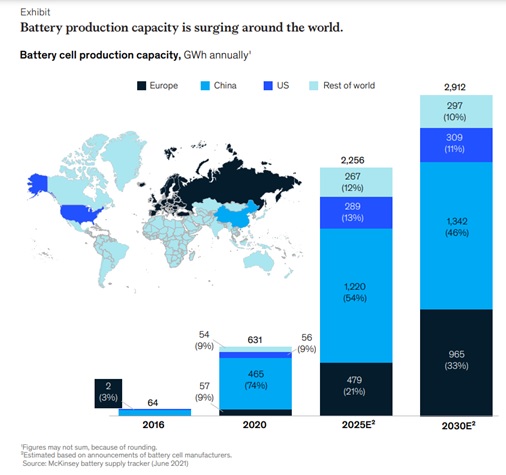Preface introduction:
In scrutinizing the market conceptions over the last decade, it paves the way for driving the need for a refined eco-system for sustainable mobility across the globe & reduce greenhouse gas emissions effect on biodiversity. In emerging solutions to mitigate the risk of climate change, reduce greenhouse gas emissions & reduce the burning of fossil fuels electric vehicles[1] emerged as sustainable & inclusivity solutions for the planet & people but are the electric vehicles sustainable at a ground level let’s demystify the intricacies of electric vehicles.
Enabling sustainability:
Across the globe economies had committed to shrink carbon footprints & take the edge off greenhouse gas emissions but down the line over the decades with rapid urbanization & scalability of gasoline and conventional fuel mobility traffic – the risk of climate change & air pollutants emissions surged up & thus accelerating the sustainable mobility, renewable energy sourced vehicle need was felt across the globe.
In context to the India scenario, the Government had deployed potential capital outlay in Industry & further initiatives like the National Electric Mobility Mission Plan (NEMMP) and Faster Adoption and Manufacturing of (Hybrid &) Electric vehicles in India (FAME India) have been launched by India. India has committed to cutting its greenhouse gas emissions intensity by 33% to 35% percent below 2005 levels by 2030 & further Hon’ble Prime Minister Sh. Narendra Modi emphasized to net-zero emissions by 2070 at global summit.
Over the years, EVs are often considered to be one of the most sustainable forms of transportation. Unlike hybrid vehicles or gas-powered cars, EVs run solely on electric power – depending on how that electric power is produced, EVs can be run 100% on sustainable, renewable resources. There are four parameters to consider when evaluating the impact of electric cars on the environment: tailpipe emissions, well-to-wheel emissions, the energy source that charges the battery, and the car’s efficiency.
If we drill down to parameters & analyze the impact and assess the risk over the environment, the following facts merit consideration: –
- Tailpipe emissions: – Tail Pipe is part of a car’s exhaust system like a chimney on a house, it is designed to release exhaust away from the vehicle and into the air. The tailpipe CO2 emissions measurement has been set to define vehicle fuel consumption. It’s calculated through the “carbon balance”, summing up the carbon content from CO2, CO, and THC (also measured) and converted to a fuel quantity. As the problem statement described here does not hold for electric vehicles as electric vehicles are running on electricity, it emits no tailpipe (also known as direct) emissions.
- Well-to-wheel emissions: – It’s typically an index that considers the life cycle of the energy that directly or indirectly affects the operation of the electric vehicle: its primary source, transformation, transport, and all the derived consumption in order ultimately to get the wheels of the car moving. When taking well-to-wheel emissions into account, all-electric vehicles emit an average of around 4,450 pounds of CO2 equivalent each year. By comparison, conventional gasoline cars will emit over twice as much annually. The amount of well-to-wheel emissions EVs are responsible for is largely dependent on our geographic area and the energy sources most commonly used for electricity. For example, if we live in California, then electricity likely comes from natural gas. This doesn’t hold if an electric vehicle is being used and charged in New Hampshire, as the state sources most of its electricity from nuclear power plants.
- Energy Source: – Electric vehicles have the ability to substantially convert electricity into power by leveraging routing via internal renewable energy sources that can be generated in the comfort of homes such as solar, wind, or geothermal energy. Alternatively, it can also be sourced through community solar share[2] or through vendors that enabled a pipeline of “green power” options by leveraging renewable energy sources.
- Efficiency: – On comparative analysis of an EV option to a conventional gasoline vehicle (or even a hybrid option), car shoppers also often evaluate MPGe which is otherwise called miles per gallon equivalent (of gasoline). The EPA calculates MPGe by representing the number of miles a vehicle can go given the same (or equivalent) amount of energy that would be contained in one gallon of gasoline. The average MPG of a typical gasoline-powered car is around 24.7 miles per gallon. While that’s much more efficient than in the past, it’s not much when compared to the MPGe of electric vehicles on the market today. Electric vehicles available now can have a comparable “fuel economy” of as high as 100 MPGe – more than quadruple the efficiency of conventional vehicles.

SWOT Analysis of Electric Vehicles:
Electric vehicles inherited certain shortcomings, opportunities, and strengths that need to be evaluated as the risk needs to be assessed those merits considerations on ESG factors:

The above-depicted presentation highlights high-level snippets at glance for SWOT analysis in light of study and investigation by experts.
In aforesaid above, sustainability strength aspects have been enunciated now let’s discuss at a granular level the Weakness, opportunities, and threats aspects.
Weakness aspects
- Higher upfront cost: – Electric vehicles are often interplayed with higher battery costs & resource scarcity viz Lithium & cobalt makes the EV a non-affordable alternative green option as prices tend to be a concern for all classes of society.
- Higher recharge time: – Electric vehicles are not fully end-end disruptive models though it’s dependent on renewable sources for power fueling despite of that a high lead time is required to recharge to top level
- Unfeasible for longer commutable distances: – Electric vehicles are not much premised on lean methodology as it’s economically viable to travel for longer trips. AEVs on average have a shorter range than gas-powered cars. Most models range between 60 and 120 miles per charge and some luxury models reach ranges of 300 miles per charge. For comparison, gas-powered vehicles will average around 300 miles on a full tank of gas, and more fuel-efficient vehicles get much higher driving ranges.
- Limited charging station: – Electric vehicle infrastructure is not fully equipped due to the limited volume of charging stations hitherto it’s not viable for longer distances travel as the frequency of running out of power is often more.
- Higher replacement cost: – Electric vehicles enrich new flavors to global markets but one of the major barriers to pace up to mass adoptions is battery replacement cost. In light of a joint study by ACKO and YouGov-about 40% of the four-wheeler EV prospective buyers’ respondents listed cost of each battery replacement as an apprehension as battery contributes to a substantial part of an EV. This was an apprehension to 37% of two-wheeler EV intenders. Currently, the cost of replacing an electric car’s battery is ₹15,000-20,000 per Kwh (a mid-range car’s battery is 30-40 Kwh). For an electric scooter, this cost stands at about ₹30,000 currently.
Apart from cost, frequency of replacement was also a concern for 36% and 38% of four-wheeler intenders and two-wheelers intenders, respectively, as per the report.
- Inadequate infrastructure pipeline to accelerate drive of EV ecosystem: – End-end ecosystem is not fully accelerated that drives mass adoption of electronic it’s still currently under pipeline to reengineer the current business process.
Opportunities aspects
- Development of Public charging station: – One of the major hurdles of mass EV adoption is range anxiety. The doubt looms over a passenger planning to go to a distant place without a good network of chargers, a long-distance traveler will always doubt the consequences of running out of battery energy, and not just long-distance travelers, this may be the case for an urban traveler as well. It will be plug thought in human psychology to adopt on a mass level thus solutionism is to scale up charging stations at distant places across geographical locations.
- Battery recycling business: – It will bring an ample number of opportunities to recycling business startups as there are numerous batteries used in devices and EVs that have reached and are soon to reach their end of life, starting the business to treat this e-waste will take off as soon as there is material available to recycle.
- Grid energy storage modules: – Opportunities will have emerged for original equipment manufacturers of energy storage systems comprises of segments viz all-electric vehicles, plug-in hybrid electric vehicles (PHEVs), and hybrid electric vehicles (HEVs). Energy storage systems are usually comprised of Lithium-Ion Batteries, Nickel-Metal Hydride Batteries, Lead-acid batteries, and Ultracapacitors
- Electric vehicle fleet[3]: – Total cost of ownership (TCO) for electric vehicles in the fleet is lower than for ICE vehicles. Electricity is cheaper than fuel, and EVs have fewer breakdowns and require less maintenance. Over the course of time, companies could also lower their running costs by using V2G (Vehicle to grid technology) to earn extra revenue.
- Solar integrated electric vehicle charging: – Modelling an inhouse solar system infrastructure can certainly eliminate the need for fueling battery cost from charging stations but this requires a lot of pre-essentials like size, daytime & climate conditions. This brings another opportunity to leverage.
- Increase in employment opportunities: – With the rapid pace of growth of this industry employment opportunities also soared. According to the Ministry of Skill Development and Entrepreneurship, the EV industry is estimated to provide more than 5 crore direct and indirect employment opportunities. According to estimates from current employment data, the renewable energy (RE) industry has a high employment rate and according to the Indian Labor Organization, the employment potential in the renewable energy industry will increase to 38 lakhs by 2030. Potential employment in areas like artificial intelligence, big data and analytics, app development, and the Internet of Things.
- Battery pack and cell manufacturing: – In light of findings from McKinsey & Company – In 2020, for the first time, the global number of EVs surpassed 10 million. This milestone comes amid driven by three key factors: evolving regulations, OEM sustainability targets, and increased customer pull as OEMs broaden their product portfolios. A base-case EV uptake scenario requires more than 3,900 GWh of battery capacity globally by 2030 with passenger cars accounting for roughly 2,400 GWh, while an aggressive uptake scenario requires an additional 600 GWh. Geographically, the need varies; battery cell demand will remain highest in China, followed by Europe and the United States & further additional cell capacity estimates based on the announcements of battery cell manufacturers sum to a global supply of approximately 2,900 GWh by 2030 (exhibit). Overall, 60 new Giga factories with an average production capacity of 25 GWh are being planned for construction globally by 2030. There is a tendency for Giga factories to become larger on average, in some cases reaching up to 100 GWh.

Key consideration impacting ESG factors – Threat aspects:
Across the globe governments had committed to shrink & make net zero- greenhouse emissions and carbon footprints & thus to progress on this agenda it’s been proposed to revolutionize the automobile industry by shutting up doors for internal combustion engines vehicles productions & scale up footprints for electric vehicles manufacturing but there are points that merits considerations in evaluating upon “E” aspect of ESG i.e., environmental aspects:
- Experts had reiterated that EVs can probably dent the eco-diversity as EVs are more adverse than conventional gasoline vehicles in terms of carbon footprints due to the manufacturing process of electronic batteries.
- In respect of investigation by IVL Swedish Environmental Research Institute states that manufacturing an electric car battery requires around 350 to 650 Megajoule of energy per kWh and a regular battery pack of an EV can generate 8[i]0 to 90 grams of CO2 & further adds emissions from power plants that produce the electricity to power such vehicles.
- Further respect study carried out by Christoph Buchal of the University of Cologne, went as far as to conclude that, electric vehicles have “significantly higher CO2 emissions than diesel cars in the end-end outbound transmission of delivery a ready-for-use final product”.
- Electric vehicles do not emit perilous greenhouse gases and nitric oxide though but as they leverage electricity by combusting dirty fossil fuels, hence there are no benefits in clear terms if we aggregate carbon footprints.
Conclusion:
In nutshell based on above factual considerations electronic vehicles are not fully disruptive model, though electric vehicles outlined that it has potential to replace internal combustion vehicles/gasoline vehicles that emit high amount of emissions and reduce dependency on burning fossil fuels & are more energy efficient thus contributing to progressing over making net-zero emissions and reduce carbon footprints in coming course of fiscal years which fosters inclusive sustainability over the planet but in some facets it has threats & challenges also inherited major threat being in power plants in end-end manufacturing process of battery production it release higher greenhouse emissions and have expensive upfront & battery replacement cost but as the economies upscale the marginal unit cost will be lower and total revenue will be maximize as variable cost will be apportioned on higher units & learning curve will reach at its best potential & further to draw attention on statement given by Goldman Sachs- “Adequate progress in battery technology can lower the costs of EVs by 30 percent to 40 percent”
Note:-
[1] An electric vehicle (EV) is a vehicle that uses one or more electric motors for propulsion. It can be powered by a collector system, with electricity from extravehicular sources, or it can be powered autonomously by a battery (sometimes charged by solar panels, or by converting fuel to electricity using fuel cells or a generator).
[2] Community solar is rapidly expanding across the country, and most utility companies today also have options to specifically purchase electricity from renewable resources.
[3] An electric vehicle fleet is a group of electric vehicles (EVs) belonging to a company and used for business purposes.
An EV fleet can help a company increase brand recognition and lower operational costs.
[i] References
1.https://timesofindia.indiatimes.com/readersblog/chronicles-of-enigma/are-electric-vehicles-sustainable-26629/
2.https://www.energysage.com/electric-vehicles/advantages-of-evs/evs-environmental-impact/
3.https://www.energysage.com/electric-vehicles/101/pros-and-cons-electric-cars/
4.https://www.forbesindia.com/blog/technology/are-electric-vehicles-truly-sustainable/>
5.https://e-vehicleinfo.com/electric-vehicle-in-india-challenges-opportunities/
6.https://www.mckinsey.com/capabilities/operations/our-insights/unlocking-growth-in-battery-cell-manufacturing-for-electric-vehicles





